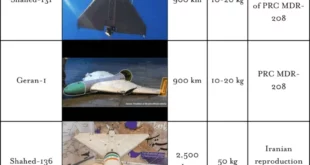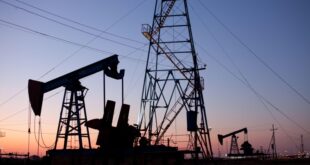
A month ago, a little after the mass protests began in Iraq against the government, Iranian general Qasem Soleimani arrived on a night flight at the Baghdad airport. Soleimani continued on in a helicopter from the airport to the heart of the Green Zone in Baghdad, the area where the Iraqi government ministries and defense establishment are located – alongside the American Embassy, according to a report from The Associated Press.
Soleimani, commander of the Quds Force of the Iranian Revolutionary Guards, surprised a group of senior officials in the Iraqi security forces when he showed up to run a meeting supposed to be led by Iraqi Prime Minister Adil Abdul-Mahdi.
AP journalists managed to speak with two Iraqi senior officials who took part in the meeting, or received a report later on what happened. The officials said Soleimani told the Iraqi participants in the meeting: “We in Iran know how to deal with protests.” The Iraqis got to work over the next few days: Snipers, it seems members of the Shi’ite militias, opened fire on protesters. About 150 demonstrators were killed. The protests resumed a week ago, after a pause of a few weeks – and dozens were once again killed across Iraq.
Similar to the protests that began in mid-October in Lebanon, the Iraqi protests expressed discontent with the internal political scene – the government’s failure in economic matters, corruption and spending money on powerful sectors and groups, such as the pro-Iranian Shi’ite militias in Iraq and Hezbollah in Lebanon. A certain amount of anti-Iranian sentiment was lurking in the background: Protesters in both countries called on Tehran to stop intervening in their internal affairs. In Iraq they even burned Iranian flags and protested in front of the Iranian consulate in Karbala, a holy city for Shi’ites.
In Lebanon, too, Hezbollah is working to repress the protests, but so far it has not used firearms to do so. Hezbollah sent its thugs on motorcycles, armed with truncheons, to battle protesters and scare them off. For now, they have failed. In the middle of the week, Lebanese Prime Minister Saad al-Hariri, the senior partner with Hezbollah in the government coalition, announced his resignation in the face of the protests.
Soleimani was right. The Iranians do have experience in putting down wide-scale public protests. In 2009, about a year and a half before the Arab Spring broke out, the authorities in Tehran harshly put down mass demonstrations that began in the wake of claims of vote fraud in the presidential election. The Green Revolution failed. But so far the Iranians have found it hard to pass on this professional knowhow to their allies in Baghdad and Beirut.
The protests are continuing, and in Iraq they have led to quite a lot of bloodshed. The fall of the government in Beirut seems to worry Tehran and its man in Beirut, Hezbollah secretary general Hassan Nasrallah. In his most recent speeches, Nasrallah accused the United States and Israel of supporting the protests from behind the scenes. On Wednesday, the website of Iran’s “supreme leader,” Ali Khamenei, repeated these claims.
It is hard to believe these claims from Iran and Hezbollah. From the Israeli perspective, for now there are no signs of immediate implications from the tensions in Beirut. The Israeli security establishment is carefully following the events, but for now they are not worried. Continued protests in the two countries could very well shake the confidence of the Iranian leadership, which has looked in recent months like it has racked up a string of successes – in light of the lack of an American response to its military actions in the Gulf, and the capitulation of the Trump administration, which has abandoned the Kurds in northern Syria.
Looking on from Israel, the protests damage the legitimacy that Hezbollah has accumulated thanks to the participation of its ministers in the government. It was very convenient for Nasrallah to hide behind Hariri. The division of the spoils in government seems to have enabled Hezbollah to provide a living for its activists by allowing them to join the bureaucracy of the government ministries under Hezbollah’s control. This was pure profit during a period in which the organization has been suffering from a cut in Iranian financial support, which is the result of harsher American sanctions.
In the past, Hezbollah has taken more violent steps. It happened in 2008, when the organization threatened a direct confrontation with the government, after it asked Hezbollah to remove its men from part of the Beirut airport complex and to stop operating its own national infrastructure. In the long run, an ongoing internal confrontation in Lebanon could also endanger Israel: In 2006, Nasrallah approved the kidnapping of IDF soldiers – which in retrospect turned out to be the opening act of the Second Lebanon War – because of internal tensions inside Lebanon.
Hezbollah was then in a different type of trouble. Hariri and his supporters accused Nasrallah – it seems justifiably – of the murder of Hariri senior, Rafiq, Saad’s father and also a former prime minister of Lebanon. The calls grew in Lebanon at the time to disarm Hezbollah, a promise that was never carried out – even though it was included in the Taif Agreement from 1989 to end the country’s civil war. The escalation with Israel was intended to enable Nasrallah to once again present himself as the defender of Lebanon. But in the end, it led to the exact opposite. The provocation spun out of control, and many in Lebanon blamed Nasrallah and Hezbollah for sparking the widespread destruction caused by the Israeli bombings during the war.
The unrest in Lebanon and Iraq indirectly reflects what is going on in a different arena too, the Palestinian one. What is showing signs of becoming the second wave of the events of the Arab Spring is reawakening the unfulfilled calls to strengthen the democratic processes in many Arab countries. The two Palestinian regimes, the Palestinian Authority in the West Bank and Hamas in the Gaza Strip, are suffering from a lack of legitimacy in the eyes of their publics – because the last elections were held in the Palestinian territories back in 2006. The chairman of the Palestinian Authority, Mahmoud Abbas, is aware of the growing criticism of him in the West Bank, as well as the tempting model of the protests set by the protesters in Beirut for their brothers in Ramallah and Nablus: youthful, secular by nature and nonviolent. This too is lurking in the background of the public dialogue Abbas is conducting with Hamas concerning the possibility of holding new elections for the Palestinian parliament and presidency.
What began as a game of accusations between Abbas and Hamas could very well end differently. As Michael Milshtein of the Moshe Dayan Center for Middle Eastern and African Studies at Tel Aviv University notes, a rolling dynamic often develops in the Palestinian territories that is stronger that the basic interests of the parties involved. A situation could well develop in which the rival camps will be afraid to be seen as the side that opposes the democratic process, and so they will express willingness to make progress toward elections. These developments could influence Israel, too, Milshtein told Haaretz.
Similar to 2006, the Palestinians might demand elections in East Jerusalem too. At the time, Ariel Sharon’s government gave in to the pressure from the Bush administration. Given present political circumstances, it’s hard to believe an Israeli government – headed by Benjamin Netanyahu or even Benny Gantz – would allow itself to make such a concession.
 Eurasia Press & News
Eurasia Press & News


